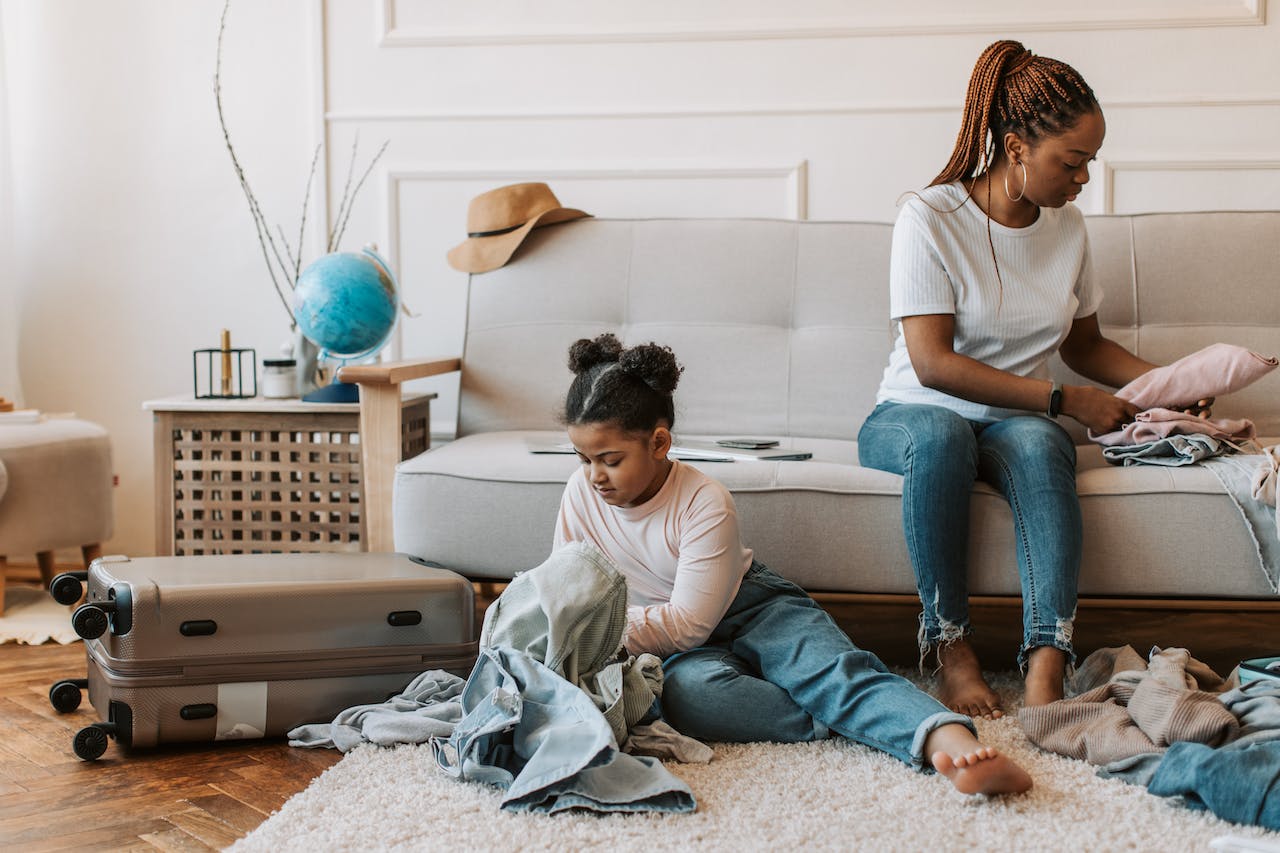When it comes to keeping your home and family safe and secure, it’s important to be informed about the best security and alarm systems on the market today and know which one is right for you. Gone are the days of expensive, one-size-fits-all alarm and home security solutions: customizable systems, automation, and a variety of smart home technology and devices mean you can create a home security setup that’s just right for your needs. But expanded options can also make selecting the right security system a daunting task, so we’ve rounded up the best advice from top home security experts to help you make the right choices. Read on for all you need to know about the latest in home security systems straight from the pros.
What factors should I consider when choosing a home security system?
First, you’ll want to check whether the system offers professional monitoring. Professional monitoring guarantees that you have experts on call 24/7 to check for false alarms and quickly mobilize the authorities in case of a real emergency.
Second, you’ll want to get a system that is easily expandable, especially if you’re in a new home. You’ll want to go with a company that can blanket your home with protection with things like smoke detectors, freeze and flood sensors, and cameras and smart locks if you’re into the smart home lifestyle — bonus points if they’re all easy to install.
— From our friend Dave at SimpliSafe
What’s better: a wired or wireless house alarm system?
It’s always best to go with a wired system, if possible. Wired systems tend to be much more reliable than wireless systems for a couple of reasons:
- Wireless signals are susceptible to interference, and devices must be placed in an area where there’s a strong wireless signal. Interference or a poor WiFi signal can result in dropped signals, which essentially leaves your home unprotected.
- Wireless systems tend to be powered by batteries that need to be monitored and replaced or charged regularly. If a battery dies then once again your home is left unprotected.
That being said there are situations where running cable could be a challenge, not cost-effective, or just not possible. These are the situations that wireless systems were really intended for. They fill a gap that wired systems sometimes just can’t cover. Which one is best really comes down to your unique situation. And keep in mind that having any type of alarm system is going to be better than not having one at all.
— From our friends at Montavue
How do I prevent a smart lock from being hacked?
Make sure you choose a smart lock with data link encryption such as SSL. An additional camera can also highly secure your front door. A motion-activated camera can even notify you whenever someone tries to approach your door to hack your lock or use a stolen access code.
— From our friends at Gate Smart Lock
How important is a home security system with audio versus one without it?
Having a security system that’s divided into zones can be an awesome feature. For a homeowner with a bigger home with multiple entrances, that type of alarm will give them an indication of what zones are being entered without having their eyes on it. But for some, the audio feature is a loud annoyance. It really depends on what you’re looking for in your security system. Most modern security systems, especially the new all-in-ones (units that are both a keypad and a security system), the option to announce zones is optional. They all have it, but a user can also turn it off. These provide the most flexibility, however, almost every security system on the market comes with a siren installed inside of it. This important feature is what lets a thief know they’ve been caught. Some of the super-cheap budget systems might not come with a loud siren. But a good 90dB siren is pretty standard nowadays. At the very least, you should make sure your security system has one of those. — From our friends at Alarm Grid
How to choose a pet-friendly home security system?
A pet-friendly home security system is critically important, and also—luckily—easy to get. The first thing to be aware of: make sure your system has the ability to adjust the sensitivity of the motion sensor. Motion sensors are the most common ways that pet owners experience false alarms. Secondly, if there’s no motion sensor, add window sensors to your ground-level windows for extra security. Many people will install both window sensors and a motion sensor, as well. Finally, pet owners love a monitored smoke detector. In case of fire, normal smoke detectors just make lots of noise while the house burns down, and sometimes with beloved pets inside. But if pet owners have a monitored smoke detector connected to their alarm system, they never have to worry about that again.
— From our friends at Cove
Do I need window sensors on every window? How do I determine the right number of sensors for my home?
This really turns into what the customer ultimately wants. Ultimately every customer will have their own perception on the needs such as if you are in a high crime area maybe you want more; for a less crime area maybe not as much. So I’ll answer each question as if I’m doing it for my own house to protect my own family:
Q: Do I need window sensors on every window?
A: I would say yes, especially if you’re in a high crime area.
Q: How do I determine the right number of sensors for my home?
A: Each customer has to determine and balance safety with their budget. If budget is high, then having one at each entry point including windows, gates, doors, garage door/s, etc would be ideal. If your budget is low maybe consider all windows, garage door(s), and the main points of entry like front and back doors.
— From our friends at Amcrest
How do I decide how many outdoor security cameras my home needs? Where should I place them?
More than 79 percent of break-ins happen via either the front door, first-floor window, or back door. Here’s a breakdown of where to install your cameras:
- Front door
Thirty-four percent of burglars typically use the front door to gain entry into a home. A doorbell camera is recommended for the front door, but it requires you to be glued to your phone and paying attention to all of your notifications. An alternative would be a Deep Sentinel camera, which provided 24/7 live guards monitoring every activity. - First-floor window
Twenty-three percent of forced entries use a front window. Depending on the configuration of your home, some cameras can catch the view of your front door and window, but in most configurations, you may need two front cameras. - Back door
A security camera near a backdoor is crucial, especially if you have an open backyard (e.g. no fence line). If you have a fence line, another recommended location would be at a side-gate entrance. - Above the garage
If you park your cars outside of the garage, we also highly recommend installing an additional camera above the garage.
— From our friends at Deep Sentinel
How do motion sensors for outdoor lighting work? How should you determine if your home should have one?
Most outdoor motion lights operate on a technology known as passive infrared (PIR). PIR is a sensor that detects heat signatures and the changing heat signatures of the area being monitored. When there’s no change in heat signatures, the light remains off. The PIR is detecting when a significant heat source enters the field of view of the sensor. At the point that a new heat signature enters the field of view of the PIR sensor, the device will “wake up” the attached lighting to illuminate the area. People who are supposed to be present at the location should not be alarmed by this. But an intruder would likely be scared off, as their work is more complicated when they’re more visible.
Many connected products can now also send notifications when such an event occurs. We recommend motion-sensing lighting for anyone that wants to alert visitors that they’re being monitored, which includes potential intruders. These detectors are especially good for entry points that may be down an alley, around the back of a home, or otherwise poorly lit at night. Not only will a motion-sensing light illuminate potential intruders when you’re not around, it will also give an extra sense of security when you do arrive home, ensuring that you can see your surroundings before proceeding to make entry into your home or business.
— From our friends at Scout Alarm
What are the best places to place indoor cameras throughout your home?
When deciding where to place your indoor camera, it’s important to think about what you’re trying to capture. If you’re trying to see what’s happening around your home, generally we recommend putting your camera in a high traffic area like the family room or the kitchen. You’ll be able to see most of what’s going on in your home. If you’re looking to see something specific — like your pet or a child coming home from school — you’ll want to place the camera in that area. Facing the camera at the front door will allow you to see every time a child comes home. Our video services have analytics with them, so they can alert you when it sees an animal or a person. You can even be alerted if a person or pet goes somewhere you don’t want (think of your pet getting on your sofa).
— From our friends at Link Interactive
How important are outdoor sirens?
Outdoor sirens are a very important part of your home security setup. They’re primarily a deterrent for potential intruders, but are also great for alerting you and your neighbors to a potential break-in. A high-decibel output rating and waterproofing are essential features, while strobe lights and battery backup are nice-to-haves. Also, consider placing multiple outdoor sirens strategically to ensure coverage all around your home.
— From our friends at VueVille
Choosing the right home security system and smart home devices can make a big difference in making sure your home and family are adequately protected. If you follow this advice from top pros in the field, you’ll be sure to choose the best security system for your needs.




